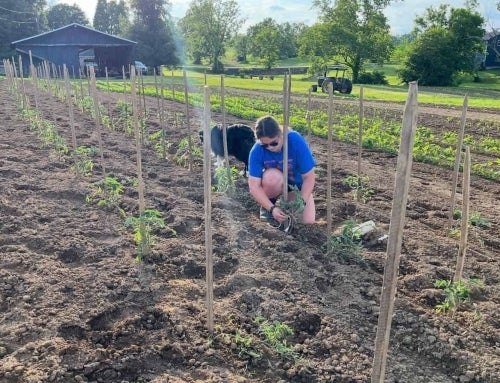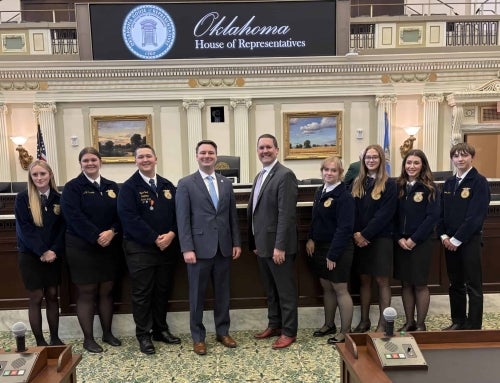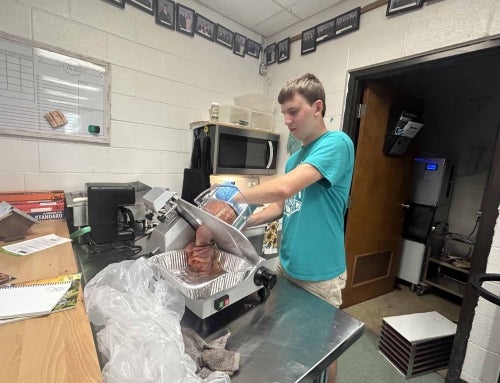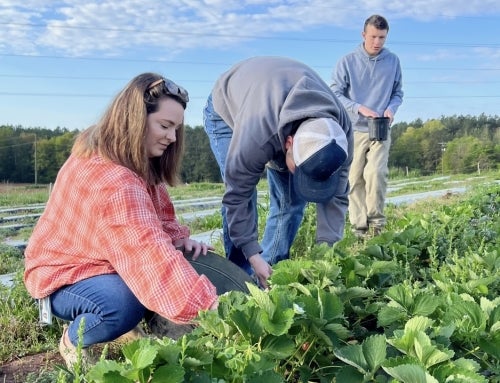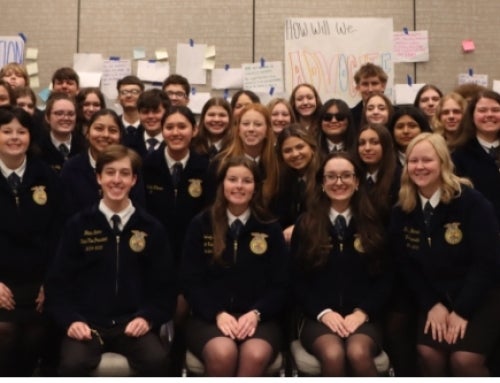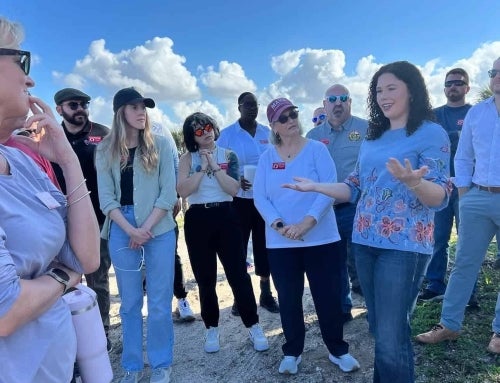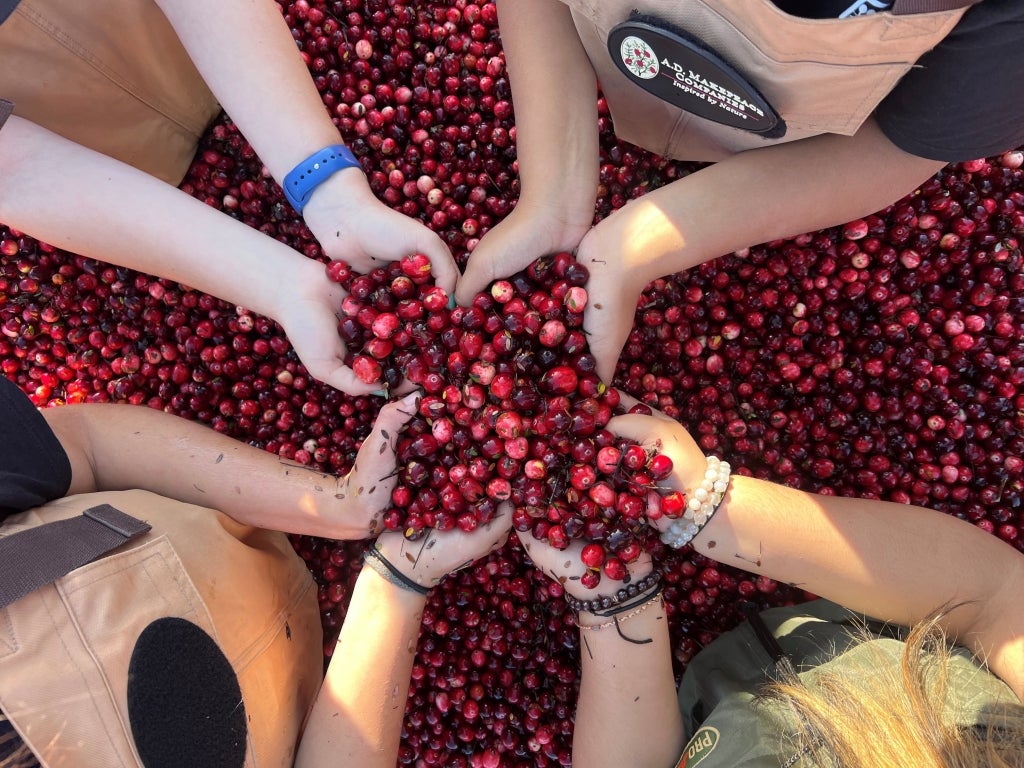
Massachusetts Agricultural Youth Council members hold cranberries in a local bog. Photo by the Massachusetts Department of Agricultural Resources.
What’s one crop you know that requires the field to be flooded for harvest?
From fields of corn and wheat to orchards filled with peaches and apples, a plot of land filled with water is not the first to come to mind when “crops” are mentioned.
But for Massachusetts farmers, that may not be the case.
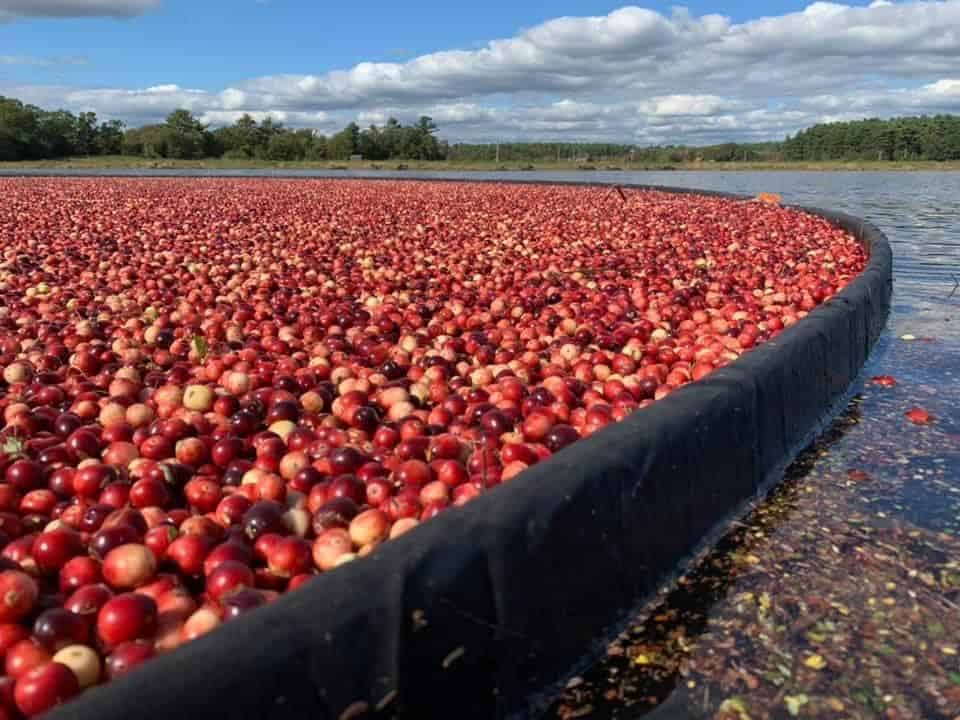
A cranberry bog at A.D. Makepeace Company in Wareham, Mass., harvesting the state fruit of Massachusetts. Photo by the Massachusetts Department of Agricultural Resources.
Cranberry Craze
With a long growing season beginning in April, cranberries are ready to harvest in late September. The crop peaks in October, and harvest wraps up toward the beginning of November — just in time to flood the shelves of stores with cranberry-flavored items throughout the holiday season.
As one of Massachusetts’ most prolific native crops, these low-lying plants thrive in glacially formed bogs and marshes. With more than 13,000 acres of land dedicated to commercial bogs, Massachusetts boasts the longest history of growing cranberries in the United States.
The cranberry industry generated more than $1.7 billion for the Massachusetts economy in 2023, sustaining 6,400 employment opportunities in the cranberry production hubs of Barnstable, Bristol and Plymouth Counties.
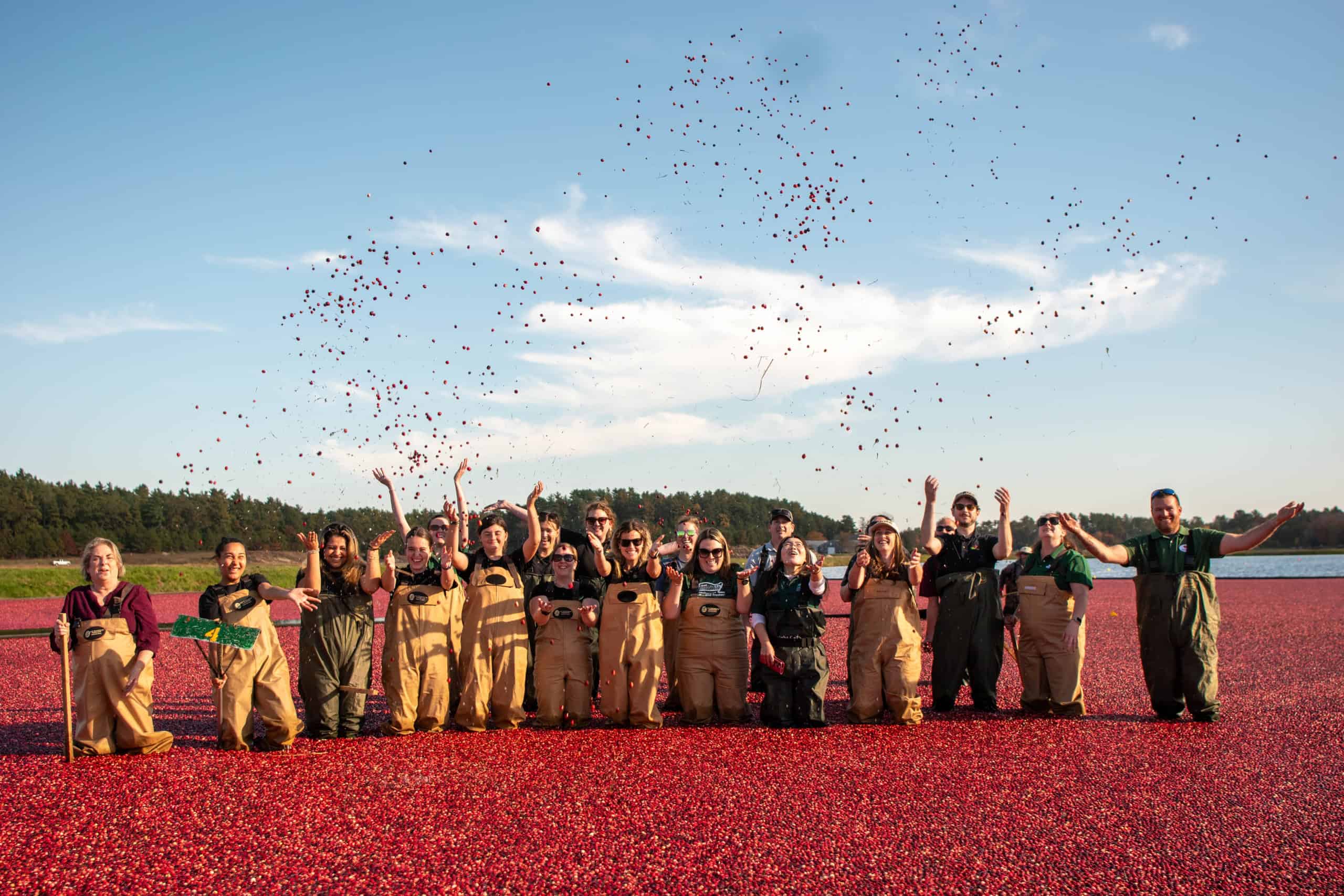
Cranberry Kickoff with the Massachusetts Department of Agriculture in October. Photo by the Massachusetts Department of Agricultural Resources.
These bogs are an untapped resource in environmental benefits that continue to protect more than 60,000 acres of open space from urban development. The Massachusetts Department of Agricultural Resources (MDAR) launched the Massachusetts Cranberry Bog Renovation Enhancement Grant Program in 2020 to sustain these efforts. Since then, this initiative enabled 96 applicants to receive $5.6 million to renovate 433 acres, increasing efficiency and production yields.
These efforts, in collaboration with Massachusetts Cranberries, the University of Massachusetts Cranberry Station and other stakeholders, paved the way for maintaining sustainable growing practices and water management techniques.
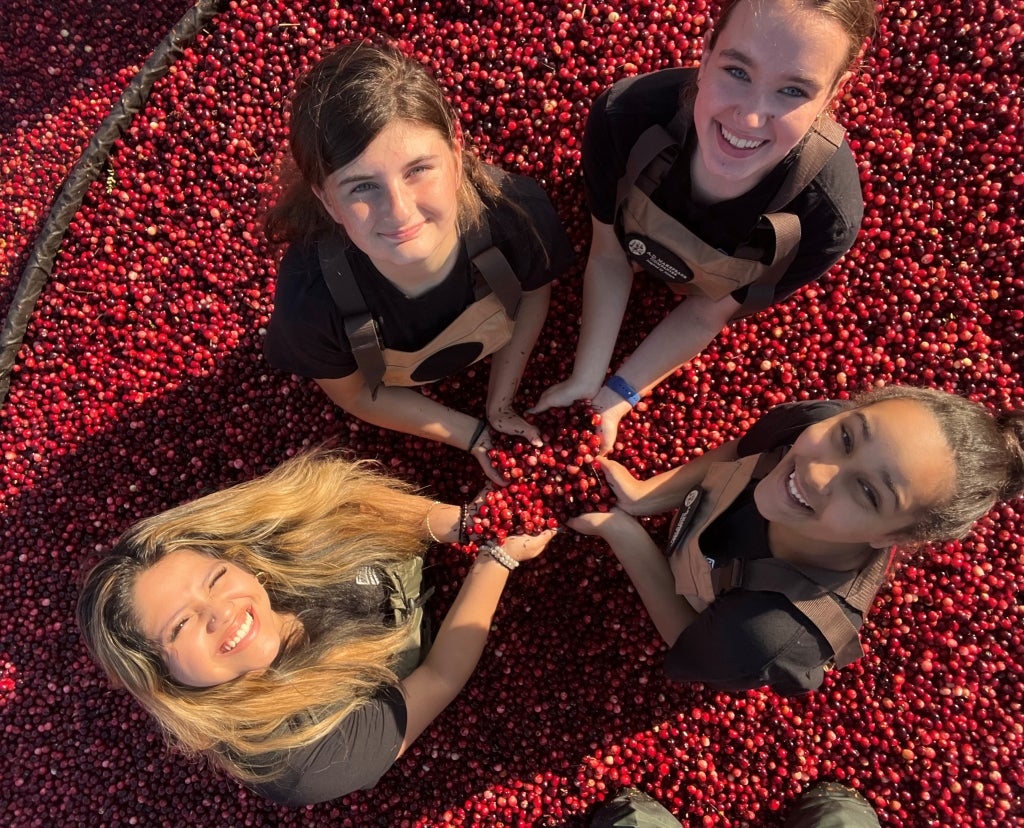
Massachusetts Agricultural Youth Council members include Carolinne Rodriguez, Colleen Kielbania (an Essex FFA member), Michaela Jardine-Yeats and Amanda Cooper. Photo by the Cranberry Kickoff with the Massachusetts Department of Agriculture in October.
Supporting the Berry Future
“[The] MDAR will continue to support best practices in water management and sustainable growing techniques,” says Ashley Randle, the commissioner of the Massachusetts Department of Agriculture. “That will help growers with climate resiliency and ensure that the sector will remain a staple and part of the agricultural landscape in the state in the face of unique 21st-century challenges.”
What’s one crop that sustains your state’s future in agriculture? Learn more about this fascinating crop with Massachusetts Cranberries.



